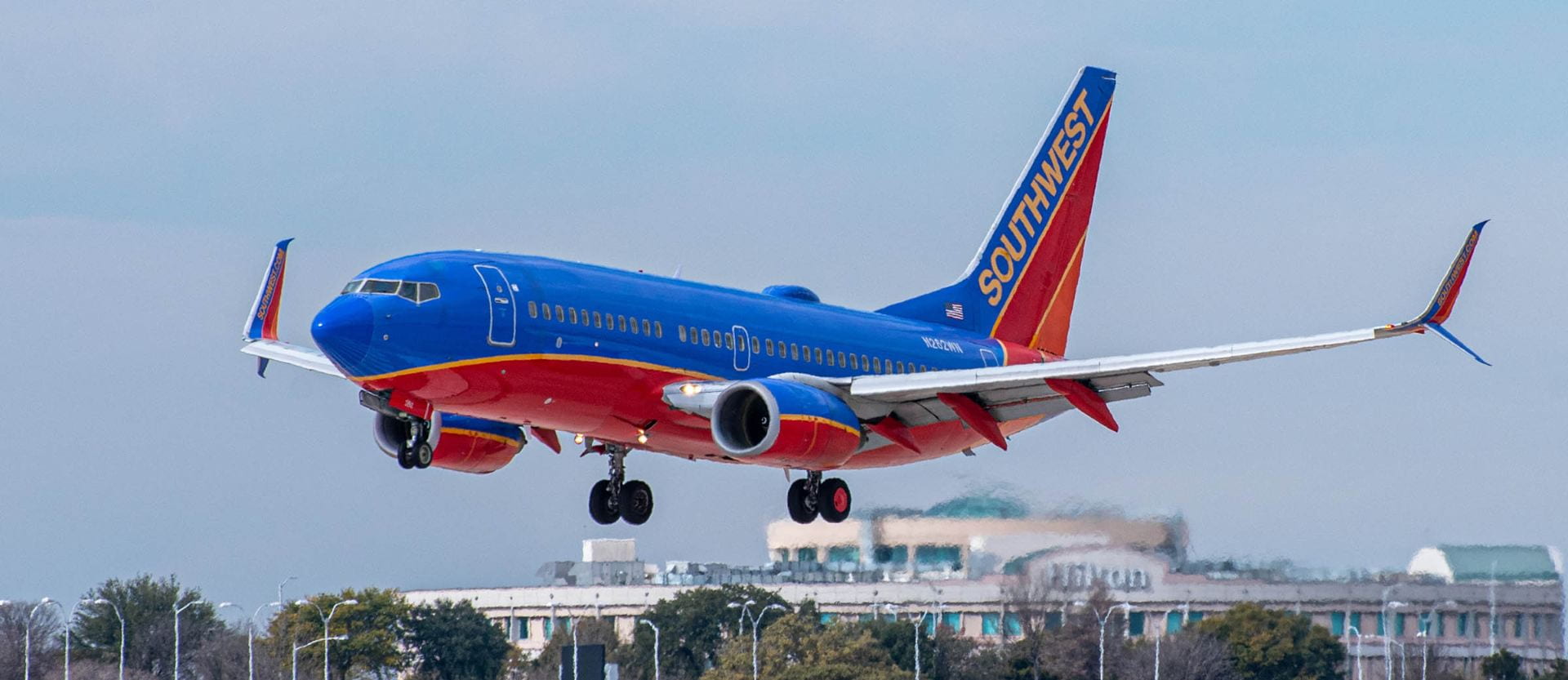Dallas Love Field and Southwest airline passengers received multiple boons when the Wright Amendment was repealed in late 2014. There were more nonstop flights and destinations, more gates at Love Field and reduced fares. Media stories reported that this policy reversal was a positive development. However, in new research, ITOM Professor Vishal Ahuja of SMU Cox and co-authors show that the repeal had some unintended consequences.
Destinations like Chicago, New York and San Francisco certainly benefited from nonstop flights. But the smaller cities like Kansas City, M.O., Albuquerque N.M., and Midland/Odessa saw reduced passengers, which feeds into their local economies.
Ahuja says their work considers the more holistic story of the changes with Southwest Airlines after the repeal. “It’s not as clear-cut a story,” he notes. “What happened to passengers travel times across the nation is a story that glosses over many of the nuances. We break it down by the type of destinations: larger cities like Chicago and New York versus smaller ones, some of which suffered—to a more complicated version like Minneapolis-St. Paul.”
In the research, Ahuja, with co-authors Yasin Alan and Mazhar Arikan, looked at how the changes to the network impacted operational performance after the repeal of the Wright Amendment in October 2014. Their findings about network structure and a new metric that they developed have implications for airlines’ decision-making in the COVID-19 environment. The pandemic shock to the network is already causing changes by Southwest. For example, Ahuja mentions that the airline added Palm Springs and Miami offerings and that Southwest is starting to resemble the American Airlines hub-and-spoke network versus its original point-to-point one. The additions of New York’s Kennedy airport and Chicago O’Hare were also just recently reported in the news.
Nuanced Story
It’s true that larger cities where Southwest added a nonstop flight benefited the most, with travel times from Love Field decreasing 82 minutes, on average, with savings split evenly between flight times and layovers. The problems occur in some of the smaller cities noted above, the so-called “exempt” destinations (ones that were exempt from the Wright Amendment restrictions) that Southwest was effectively using for connections to other destinations. Indeed, all nonstop routes that operated prior to the repeal, except Midland/Odessa, witnessed a decrease in seats within a year of repeal. Demand for these destinations were artificially inflated before Wright’s repeal. Also, such destinations, Austin included, saw reduced resiliency, meaning longer delays (depending on the city), and longer times to recover if you missed a flight.
To assess performance, Ahuja and co-authors specifically analyzed operational efficiency, as measured by travel times, and “network resiliency,” which considers passenger delays and the time it takes to recover in the case of a missed flight. They used proprietary itinerary details for passengers flying from Dallas Love and Houston Hobby from January 2013 to December 2015, plus some public data on airlines.
Another group of cities that Southwest served such as Minneapolis, M.N and Newark, N.J. had differing fortunes. These destinations from Dallas had to connect in other cities before the repeal. While Southwest did not introduce nonstop flights to these cities after the repeal, passengers were increasingly routed through larger airports like Chicago Midway and New York La Guardia; this had mixed benefits, depending on the destination. For example, for passengers flying to Minneapolis-St. Paul, travel times increased but delays were shorter.
The authors not only determined the general effects of the repeal, and how it affected Southwest’s network, they also quantified the impact for each city in the airline’s network.
Finally, a new metric called “route inefficiency” combines the efficiency and resiliency measures the authors used. They suggest that the change in a route’s efficiency explains 90% of the change in travel times of Southwest flights. This novel metric would allow for apples-to-apples comparisons between airlines like American, Delta, and Southwest in terms of route efficiency among destinations.
In Conclusion
Cities such as Tulsa, El Paso, Midland-Odessa, even Austin, experienced the Wright Amendment repeal with reduced passengers within eight months of the repeal, Ahuja notes. “Those destinations were benefitting from frequent flights, which were substantially reduced after the repeal. There are more nuanced situations in destinations like Minneapolis and Newark, which had longer travel times after the repeal.”
In the process of reconfiguring routes, there were unintended consequences for smaller cities and their airports suffered as a result. For passengers in those areas, Ahuja says resiliency went down, especially now in this COVID-19 era. “The disruption to the network is about how quickly an airline can recover,” he offers. “That’s what resiliency means. The network has been severely impacted and building back-up flights is about resiliency.”
From the social welfare perspective, the research highlights the varying fortunes of changes to Southwest’s network by city. Dallas fared well, but some south-central U.S. cities not as much. “Our analysis could be a framework for policymakers,” concludes Ahuja, “about how COVID-19 and other potential future disruptions could affect passengers.”
The paper “The Role of Network Structure on Operational Performance: Evidence from the Wright Amendment Repeal” by Vishal Ahuja of Cox School of Business, Southern Methodist University, Yasin Alan of Vanderbilt University, and Mazhar Arikan of The University of Kansas is under review and being revised for resubmission.
Written by Jennifer Warren.













